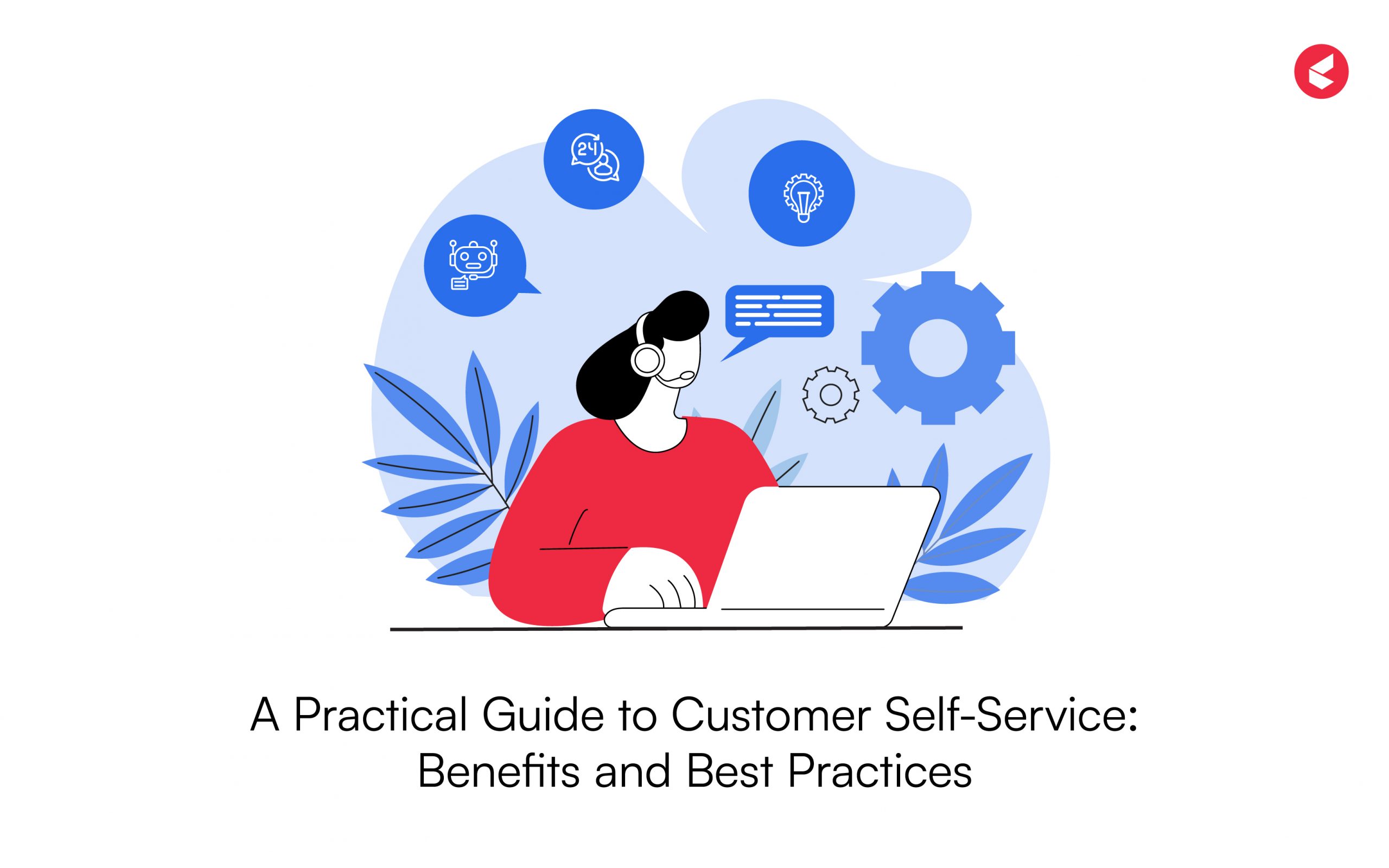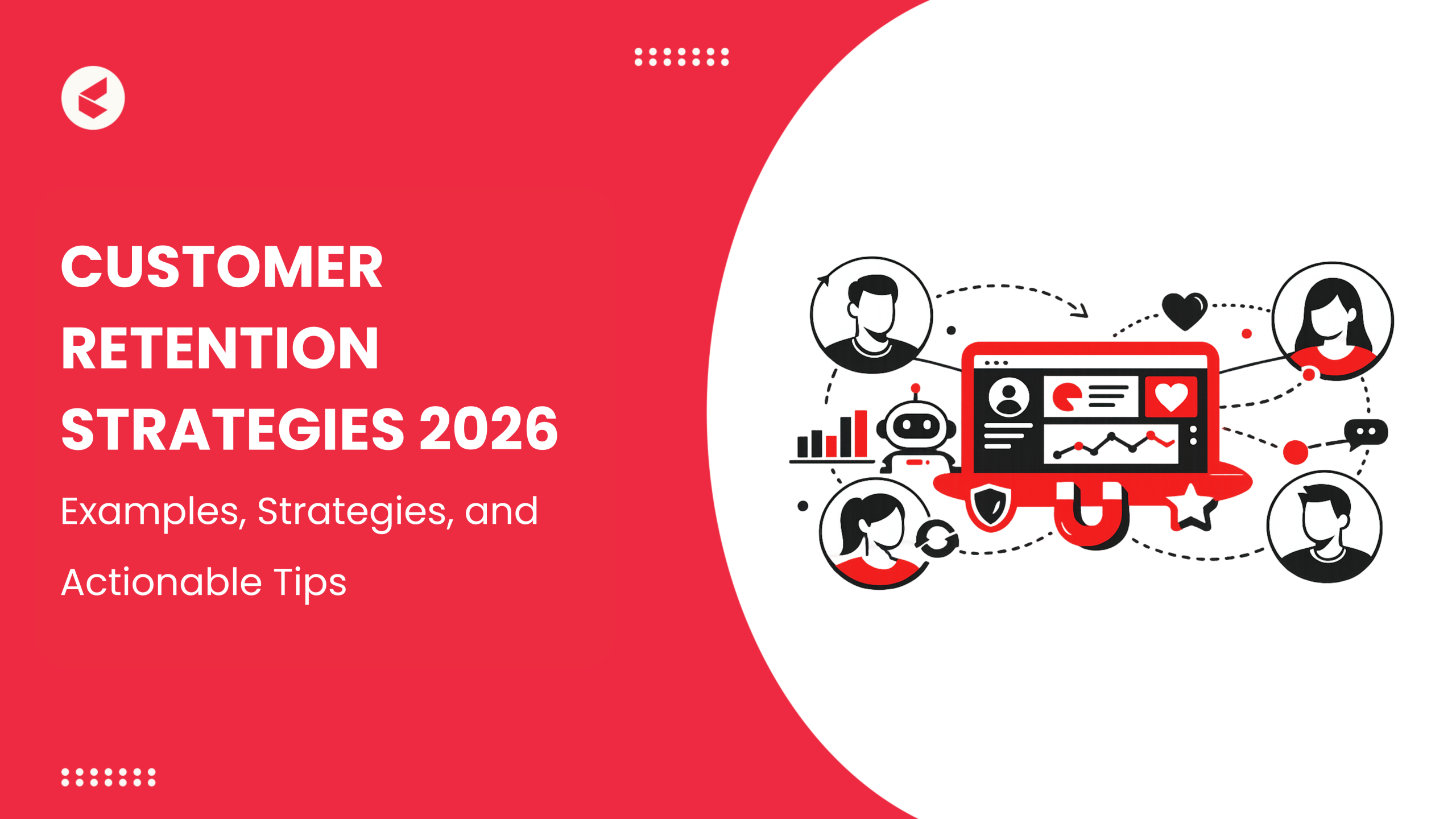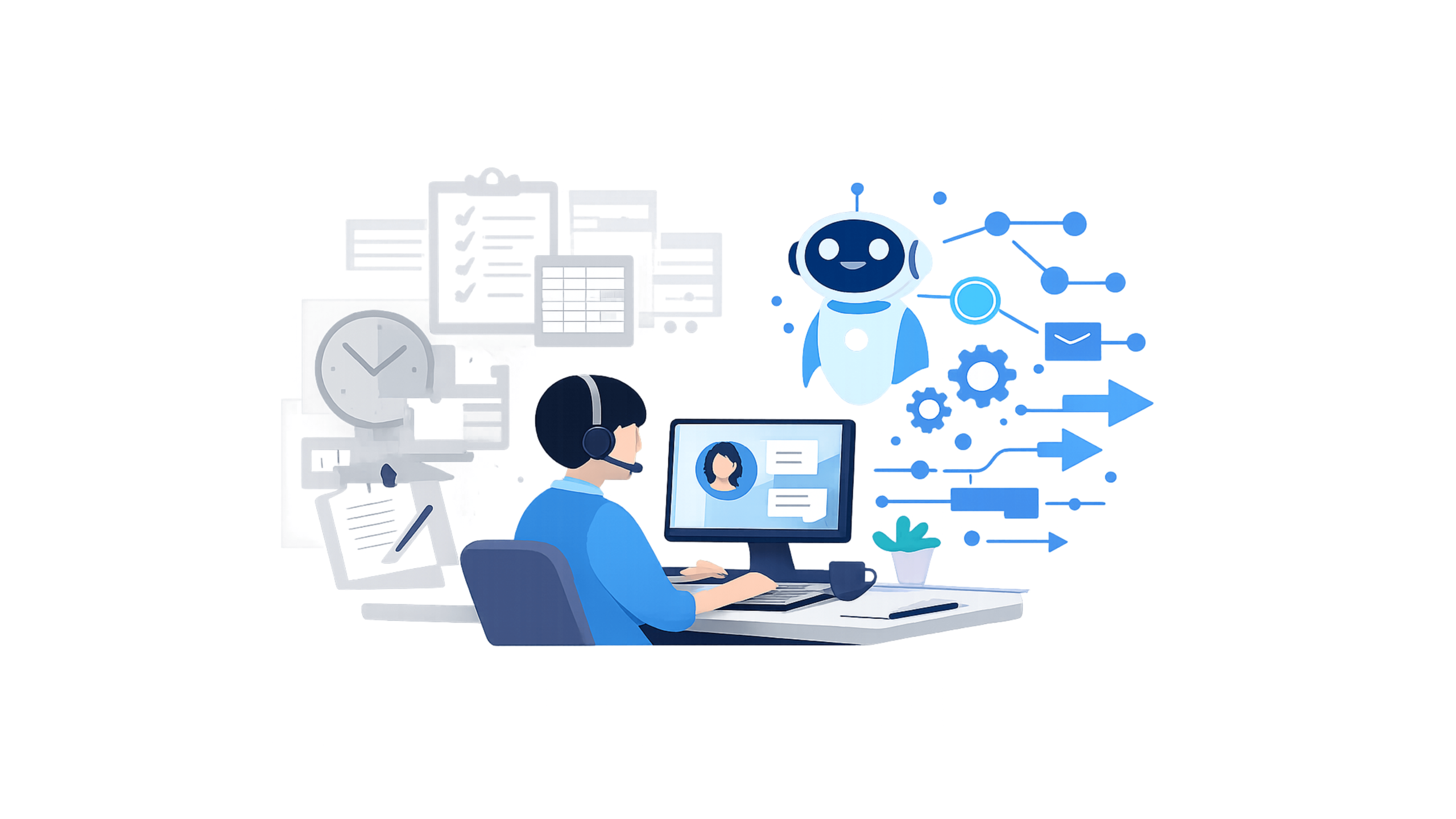The best kind of support ticket is the one that never gets created—and for businesses, this dream can become a reality.
Customers today live in a digitally driven era and are used to accessing instant solutions to their problems. Self-service, therefore, is more important today than it ever was.
91% of customers need automated solutions to reduce wait times.
In fact, a Heretto report says that of all the B2B first-touch support channels, 25% are help sites, and 17% are chatbots.
Organizations are thus familiar with modern customers’ need for effective, instant, and relevant self-service. Let’s understand it more thoroughly by looking at its benefits and the best practices for implementing self-customer support.
What Is Customer Self-Service?
Self-service refers to the mechanisms that customers use to resolve their queries on their own. Instead of calling the company, they use company-facilitated resources to search for solutions to their problems.
Self-customer service support empowers customers to guide themselves through troubleshooting or independent search for answers to their questions.
Through knowledge bases, FAQs, AI-powered chatbots, customer portals, etc., self-service is the first point of help that customers turn to when they have questions or need information about your brand or product.
For example, say a customer wishes to know the location of their shipment. Instead of calling the company, they open their app, tap on the ‘Order details’ option, and track their parcel in real-time. There are countless more instances where brands provide quick access to common queries and requests their customers face.
Customer self-support is a quick and easy way to resolve basic queries, as it does not require any waiting time or ticket creation.
For example, say a customer purchases a mobile phone from your brand. When they start it up at home, they discover that the interface is completely different from what they are used to. Instead of calling up your brand directly, they first search your website for a start-up guide for the model they have purchased.
Alternatively, since your business knows that this is a common query among your customers, you incorporate a guidance video or in-app resources on the device to help the customers set up their new phones.
This is what self-customer service looks like. It aims to deflect ticket creation and reduce the number of calls that support agents have to handle every day by enabling customers to find solutions to their problems.
Benefits Of Providing Customer Self-Service
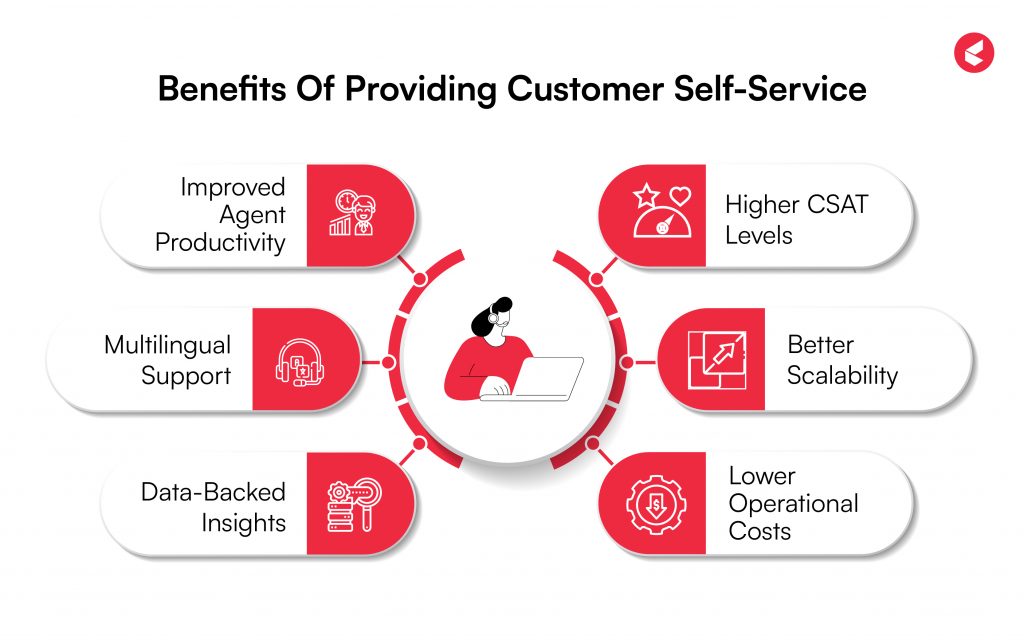
Did you know that 44% of B2B customers opt for self-service as their first point of help? The primary benefit of facilitating customer self-service is empowering this portion of your customers to help themselves.
Your business can realize five other key benefits from making relevant self-service options available for your audience:
1. Improved Agent Productivity
Self-service options enhance agent productivity in two ways. First, they reduce the queue lengths that agents have to attend to, leaving them with more time to brush up on their service skills and attend to more complex queries that require human effort and competence.
Second, the self-service resources are also available to the agents, who can access the knowledge base and FAQs at any time and enhance their own knowledge.
2. Multilingual Support
The growth of digital spaces has helped businesses cross geographical barriers and reach a wider audience base. Before AI, it was a challenge to localize service content in different languages for audiences.
However, self-service today comes equipped with multilingual support, which lets your customers access help in the language they prefer. This is extremely cost-effective compared to the alternative of hiring native speakers for every region.
3. Data-Backed Insights
Self-service modules today are equipped with data-gathering engines that help analyze several aspects of your business. This includes customer sentiment analysis, understanding and ranking their queries, assessing which channels the customers prefer to use for help, etc.
These insights help inform your strategies for self-service with respect to the things that need to change, or if you need to augment your knowledge base with better information, etc.
4. Higher CSAT Levels
Providing in-depth, easy-to-use, and swift self-service access to customers empowers them. Even when faced with slightly complex queries, it helps them navigate the knowledge base and resolve their own issues.
This brings your business one step closer to enhancing customer satisfaction with your services. All your customers want is to be able to find the correct solutions without having to put in much effort—this is made possible by facilitating a well-planned, well-equipped self-service journey.
5. Better Scalability
AI-powered self-service channels are capable of handling high volumes of workload. They are consistent, always online, and accurate so that your customers do not have to wait in call queues even on busy days for your business.
Therefore, self-service channels can be scaled up or down as required without compromising the quality of service your business provides.
6. Lower Operational Costs
Incorporating self-service in your ERP isn’t difficult anymore. Easy integration tools and APIs make it possible to introduce AI-backed self-customer support into the workflows easily.
This removes the cost burden of hiring more hands each time your business scales up. With self-help options, customers can continue to access your helpdesk uninterrupted without noticing any decline in service quality when you are scaling up.
Key Customer Self-Service Channels
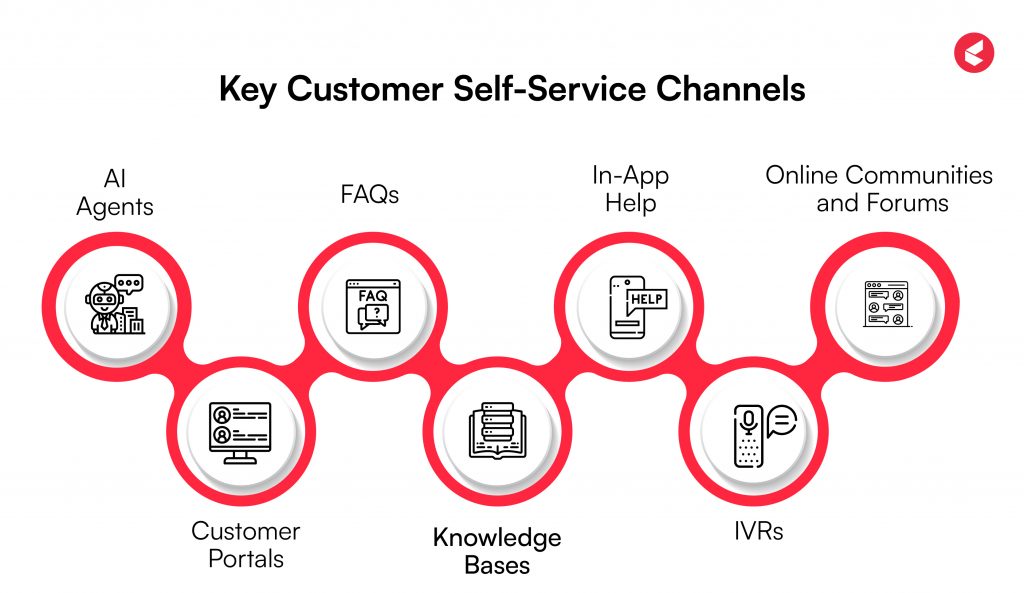
Digital solutions have made it possible to provide multiple channels of self-customer service solutions to the target audience. You can augment some of these channels with AI, while others remain traditional self-service tools that your customers can navigate by themselves.
There are seven key channels you should utilize to provide fast and accurate customer self service tools:
1. AI Agents
These are chatbots or virtual agents that have been trained on huge volumes of customer interaction data to understand queries and respond with relevant answers. They are capable of anticipating customer needs to provide better service. You can purpose-build a chatbot using modern no-code and low-code solutions.
2. Customer Portals
This is a dedicated dashboard or online hub where customers can log in using their ID and password with your brand. Here, they can access everything they could need, like product information, knowledge base, help, status of their order, returns and cancellations, etc.
3. FAQs
Frequently asked questions provide customers with a quick overview of a common query that they usually face with the brand or a product. This is the quickest way to resolve a query, and it aims to solve questions related to return policies, shipping charges, taxation, and other basic-level issues.
4. Knowledge Bases
These are the more detailed repositories of answers, solutions, how-tos, and troubleshooting resources that customers can access for mildly complex (and mostly technical) queries. For example, customers can use knowledge bases to familiarize themselves with a new software’s interface and understand its features and capabilities.
5. In-App Help
Since mobile phones are the primary device customers use today, companies provide in-app help or dedicated apps where customers can manage their questions. These apps help customers navigate queries like refunds, cancellations, complaints, tickets, etc.
6. IVRs
Interactive Voice Response technologies empower customers to use an on-call menu with voice-activated navigation to reach their solution for a query. For example, customers can easily get updates on their order or ticket status using IVRs.
7. Online Communities and Forums:
A webpage or website where other users of the same product or service gather to share their knowledge and experiences with the product. Often, other customers’ experiences and solutions solve a customer’s queries. Users can even discuss their queries with each other on the forum and explore the knowledge base for quicker solutions.
The Role Of AI In Customer Self-Service
2024 has been all about creating exemplary customer experiences, whether for shopping, browsing, or even throughout customer service with the use of AI. This includes self-customer care, an area of high focus for organizations, according to reports. In fact, 56% of companies today employ proactive customer self-service using chatbots with predictive issue resolution features.
Additionally, with the power of automation and intelligent data analysis, AI-powered self-service helps service agents save countless hours of clerical work each year. AI plays an even more important role in self-customer service support:
- Ticket deflection: Self-serve AI agents are capable of handling routine tasks and repetitive queries, which deflect a call from transferring to an agent that helps reduce workload.
- Cost reduction: AI self-service has the power to automate several routine tasks such as call routing, customer data entry, etc. and helps save countless manhours of work, reducing operational costs.
- Sentiment analysis: AI self-service chatbots are capable of assessing customer sentiment by analyzing their choice of words and punctuation marks. These AI algorithms are trained on large sets of customer interaction data that help them identify when a customer is agitated or satisfied.
The importance of integrating AI into self-customer care cannot be understated. According to reports, 83% of professionals identify AI as the next big trend in self-service.
Customer Self-Service Strategy Tips
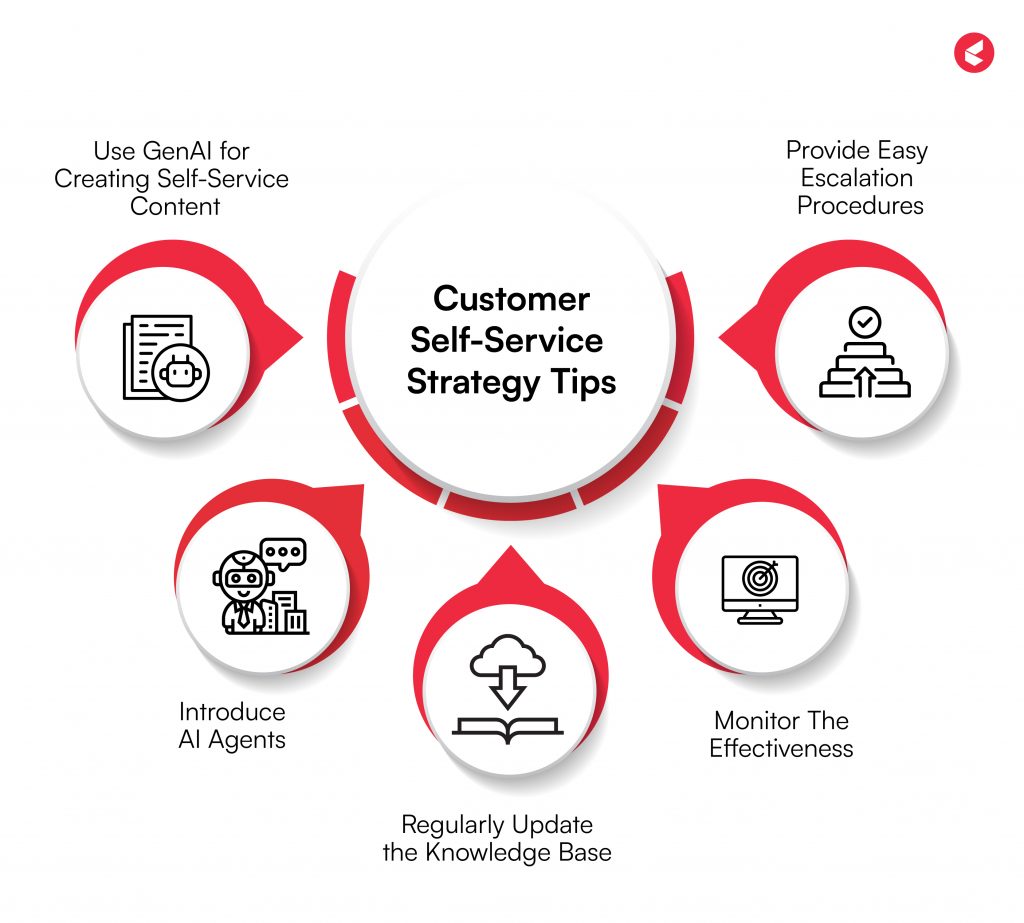
A self-service operation can only be successful if it meets customer requirements. Therefore, before mobilizing resources and launching a self-customer care solution, a little planning and organization are required.
Use the tips below to design a robust self-service module:
1. Use GenAI for Creating Self-Service Content
Whether it is for the knowledge base, FAQs, standard responses, or anything else, use generative AI to create impactful and relevant content quickly for your self-help channels. It is a cost-effective way to produce high-volume content in less time.
Additionally, look for tools with Retrieval Augmented Generation (RAG) that fetch data from the internet in real time to generate relevant responses. This helps customers get access to the most helpful information quickly.
2. Introduce AI Agents
Customers today expect round-the-clock support from brands. Leverage AI agents and chatbots that remain online at all hours of the day, ready to provide customers with the assistance they need.
AI-powered chatbots and agents can understand customer intent and sentiment and can autonomously drive a conversation to a favorable outcome when the queries are basic.
3. Regularly Update the Knowledge Base
As customer demands evolve, your self-service channels must also address the change with regular updates. Analyze the topics that generate the most tickets and queries to prioritize content updates and enhancements. Use the data to design up-to-date solutions to help customers who face challenges with a product.
4. Monitor The Effectiveness
Establish the key KPIs to measure the success of your self-service channels, such as deflection rate, CSAT score, and average handle time. Tracking these metrics is essential to understanding where your self-service channels are falling short and need to be streamlined to offer customers more detailed and relevant support.
5. Provide Easy Escalation Procedures
Sometimes, the self-service channels are not enough to solve a customer’s queries. For such situations, customer satisfaction with service depends on how easy the ticket escalation process is.
Ease of escalation lets the customer know that you are committed to solving their issues and are not averse to receiving their calls. Incorporate multiple channels for ticket escalation, like chat, email, portals, etc., to allow customers to easily take their queries higher.
Best Practices for Implementing Self-Customer Service
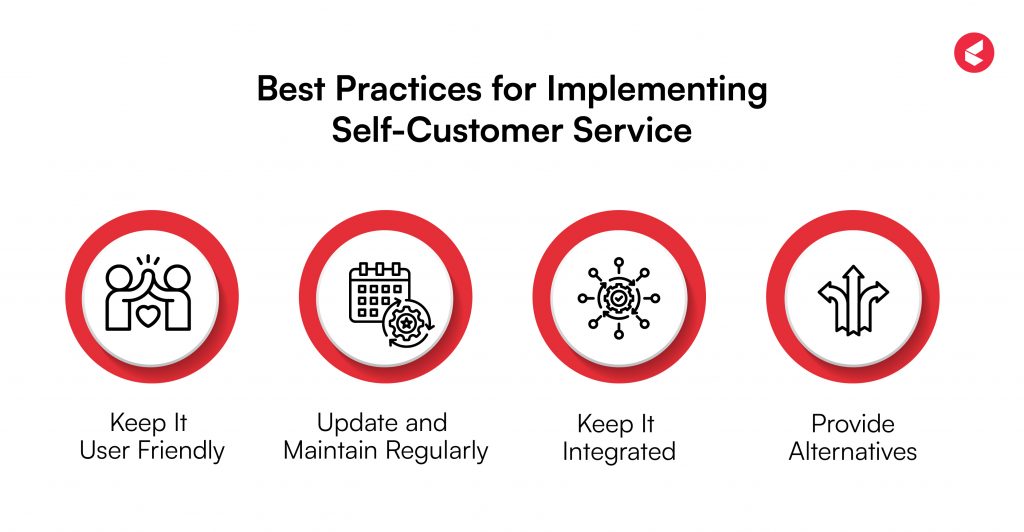
Self-customer service support may not require as much attention as a live call, but you do need to incorporate some best practices to ensure it runs smoothly. Maintaining good practices with this system helps you generate more favorable and better service outcomes.
1. Keep It User Friendly
All your channels of self-customer support should be easy to use and navigate. Consider prominently providing quick-access options on the interface, such as “Raise a Ticket” or “Talk to an Agent.”
Analyze the most frequent actions your customers are taking on your help channels and provide solutions to these issues through FAQs. Additionally, ensure that the interface design is user-centric.
2. Update and Maintain Regularly
Make it a routine to review your self-help channels and optimize them for functionality. For example, ask yourself, “Is this self-help channel solving the most common customer queries?” or “For what type of queries are customers leaving self-service and requesting agents?”
Ensure that your self-service information is aligned with customer issues. Monitoring your self-service channels helps you better understand these pain points.
3. Keep It Integrated
Integrate all your self-service channels so that your customers can have a consistent, contextual experience regardless of the channel they choose.
If they emailed you and raised a ticket, they should be able to check and track it through the portal as well. Integrating self-service channels also helps the agents efficiently track customer interactions and provide up-to-date service.
4. Provide Alternatives
A single self-service channel would not suffice for the modern customer because they are used to working with options and alternatives.
Do not make your customers switch channels to get help; provide them with help widgets or chatbots, quick tips through FAQs, etc., on the same channel where they are. This helps prevent customer frustration when they have to search high and low to get help.
Build A Sturdy Foundation for Self-Customer Support
The basics of self-customer support depend on providing well-equipped tools (like AI-powered chatbots) to the customers to help themselves. However, this operation is neither linear nor static: it is a dynamic exercise that you must continue improving and delivering. You must ensure that it is aligned with customer needs and updated with the latest information.
Utilizing the power of Kapture CX is one way to provide and track your self-customer service initiatives.
Kapture CX is an AI-enhanced customer experience platform that provides essential self-service tools, such as a hybrid self-serve bot, GenAI knowledge base, multilingual support, and more.
Realize up to 90% deflection of queries by incorporating Kapture CX self-service solutions, in addition to 77% faster resolutions. Explore Kapture CX in depth by visiting the website.
FAQs
One example of self-customer support is when a customer purchases an electronic device and wants to register it online for warranty. The customer logs into their customer portal and easily registers their device all by themselves, using the how-to guide provided with the product or through chatbots on the website.
AI chatbots, IVRs, knowledge bases, and community forums are excellent tools for customer self-service. These resources and tools help customers independently search for solutions and answers to their queries.
Yes, self-service modules like AI-powered assistants help agents save tremendous amounts of time. This is because they deflect basic queries from ending up with an agent. This leaves the agent with more time to handle more complex customer issues and provide dedicated assistance.
Today, customers are more familiar with digital technologies and require instant solutions to their problems. By using the self-service options that brands provide, the customers don’t have to wait in long queues on calls, which helps enhance their experience with the brand.
